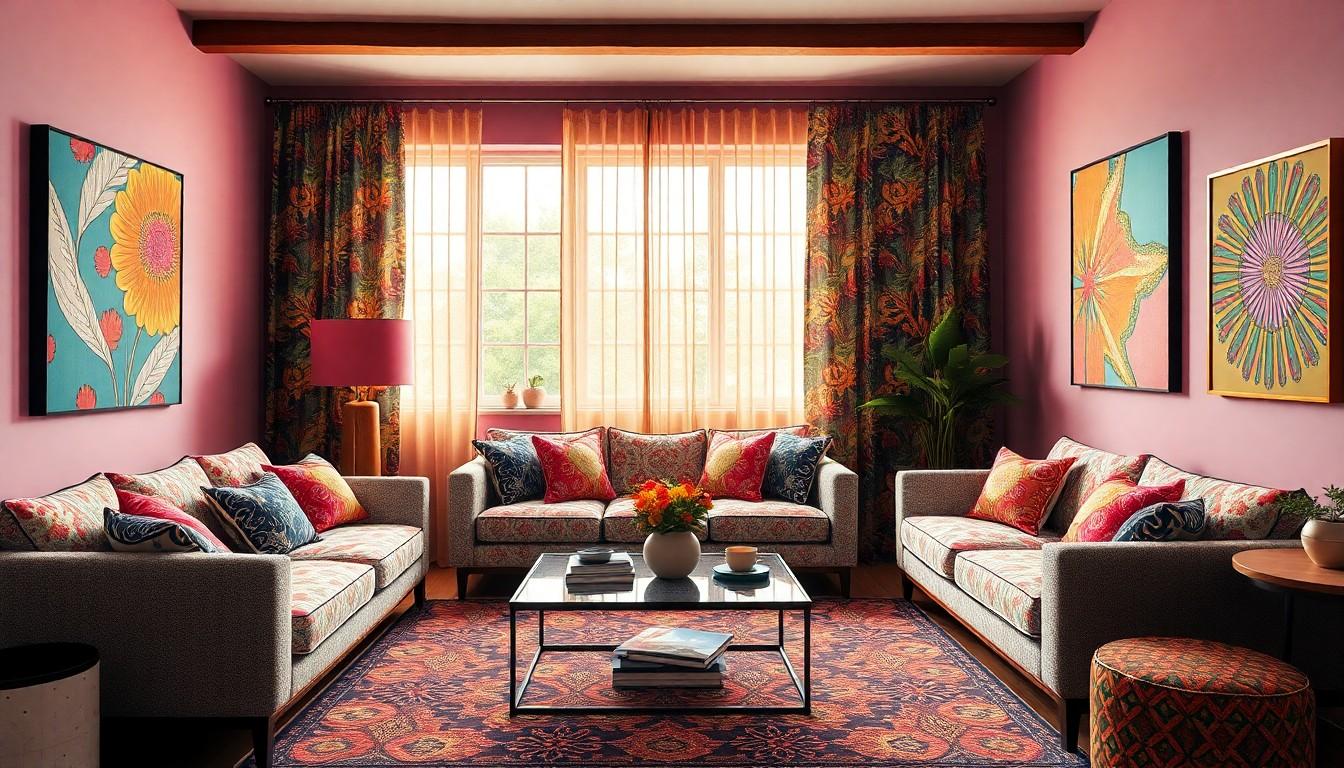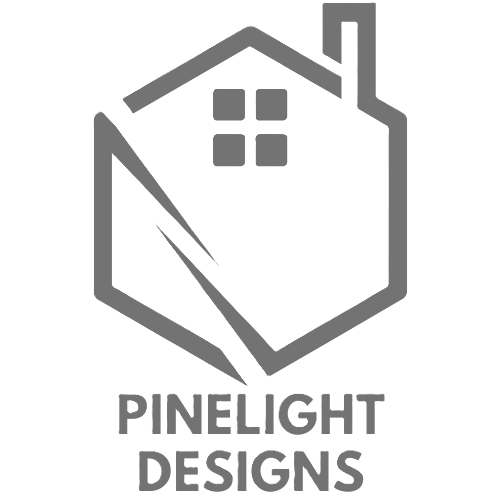Imagine stepping into a room that feels like a vibrant tapestry come to life. Pattern interior design isn’t just a trend; it’s a playful dance of colors and shapes that can transform any space from drab to fab. It’s like giving your walls a personality makeover—one that’s as bold as a peacock and as cozy as your favorite sweater.
Overview of Pattern Interior Design
Pattern interior design embraces energetic visuals and dynamic elements that redefine spaces. This approach uses various patterns, including geometric shapes and organic forms, to create diverse atmospheres. Designers often select patterns that reflect individual style and complement the room’s function.
Color plays a critical role in pattern design. Bright hues can evoke joy and excitement while softer tones often induce calmness and comfort. Mixing patterns requires a keen eye; successful combinations enhance rather than clash. Designers typically suggest balancing intricate patterns with simpler ones to maintain harmony.
Textures amplify the impact of patterns. For instance, combining fabrics with varying textures can add depth to a space. Accessories like pillows, rugs, and art pieces often incorporate complementary patterns, further enriching the design.
Incorporating patterns strategically defines different areas within open spaces. This design technique effectively delineates zones, ensuring functionality without sacrificing aesthetics. Successful implementation invites movement and flow throughout the space.
Also, the scale of patterns matters significantly. Larger patterns create bold statements, while smaller ones offer subtle elegance. Choosing the right scale impacts visual perception and overall ambiance.
Lasting impressions often result from thoughtful application of patterns. A cohesive design narrative emerges through careful selection and placement. Consider experimenting with layering patterns to create unique visual experiences.
Benefits of Pattern Interior Design

Pattern interior design brings numerous advantages that elevate overall spaces. It makes environments feel lively and engaging, ensuring areas stand out and capture attention.
Enhancing Aesthetics
Aesthetic appeal increases significantly with the right patterns. Unique designs stimulate visual attraction, transforming ordinary walls into captivating backdrops. Vibrant geometric patterns, for instance, inject energy, while intricate florals offer elegance. Ultimately, choosing patterns that resonate with personal taste creates a cohesive look that enhances beauty throughout a room.
Creating Visual Interest
Visual intrigue thrives through careful pattern selection. Incorporating various designs draws the eye and maintains engagement. Layered patterns on textiles like curtains and cushions create depth, while contrasting styles can add excitement. Spaces that showcase diverse patterns prevent monotony, promoting a dynamic atmosphere that invites exploration and interaction. Hence, skilled use of patterns ensures environments remain fresh and captivating.
Popular Pattern Styles
Pattern interior design offers a variety of styles that can transform a space’s atmosphere. Each style serves a unique purpose and appeals to different aesthetics.
Geometric Patterns
Geometric patterns rely on shapes like triangles, squares, and circles to create visual interest. These designs often evoke a modern and structured feel. Their clean lines and symmetry appeal to minimalist tastes, making spaces appear organized and sophisticated. Bold color choices within geometric patterns can energize a room, while softer hues promote a tranquil environment. This versatility makes geometric patterns suitable for various applications, including wallpaper, rugs, and furnishings.
Floral Patterns
Floral patterns bring a touch of nature indoors, often creating an inviting and cheerful ambiance. They range from large, bold blossoms to delicate, subtle repeats. Bright floral designs can brighten up spaces, while muted tones lend a calming effect. These patterns complement traditional and contemporary styles, adding warmth and texture. Common applications include drapes, upholstery, and wall art, allowing homeowners to express their personality through nature-inspired visuals.
Stripes and Checks
Stripes and checks offer classic appeal with timeless charm. Stripes can elongate or widen a space, depending on their orientation. Vertical stripes make ceilings appear taller, while horizontal stripes create a more expansive feel. Checks, with their grid-like designs, add structure and help define areas within a room. Using contrasting colors enhances their visual impact, ensuring they stand out. Both patterns can feature prominently in textiles, wallpaper, and accent pieces, introducing a playful element to a design scheme.
Tips for Incorporating Patterns
Incorporating patterns requires a thoughtful approach to achieve a cohesive look across spaces. Keep the following tips in mind for success.
Balancing Patterns with Solid Colors
Balancing patterns with solid colors creates visual harmony in interior design. Integrating solid hues between patterned elements offers a breather for the eye. Use neutral tones such as gray, beige, or white as backdrops for bolder patterns to prevent overwhelming the space. Mixing varied patterns is best done when ensuring at least one solid color ties them together. Color consistency across solid tones brings cohesion, allowing energetic patterns to shine without competing for attention. Choosing a dominant pattern and complementing it with smaller patterns balanced by solid colors achieves an eye-catching yet cohesive aesthetic.
Using Patterns in Different Rooms
Using patterns effectively varies by room, enhancing the intended atmosphere and function of each space. In living rooms, vibrant geometric patterns can energize the environment, encouraging social interactions. Incorporating floral patterns in bedrooms promotes a serene and comforting feel. Kitchens benefit from playful prints on textiles like tablecloths or curtains, adding charm to a practical area. Bathrooms might embrace subtle stripes or checks, creating a timeless look while maintaining a clean vibe. Each room’s unique function guides the choice of patterns, ensuring they enhance rather than distract from overall design objectives.
Conclusion
Pattern interior design offers a vibrant way to transform spaces into engaging environments. By thoughtfully selecting and mixing patterns, homeowners can create unique atmospheres that reflect their personal style. The interplay of colors shapes and textures not only enhances aesthetic appeal but also influences emotions and functionality within a room.
Embracing various styles from geometric to floral allows for endless creative possibilities. With the right balance of patterns and solid colors it’s possible to achieve visual harmony that captivates and invites exploration. This dynamic approach to design encourages experimentation and can lead to stunning results that breathe new life into any space.





